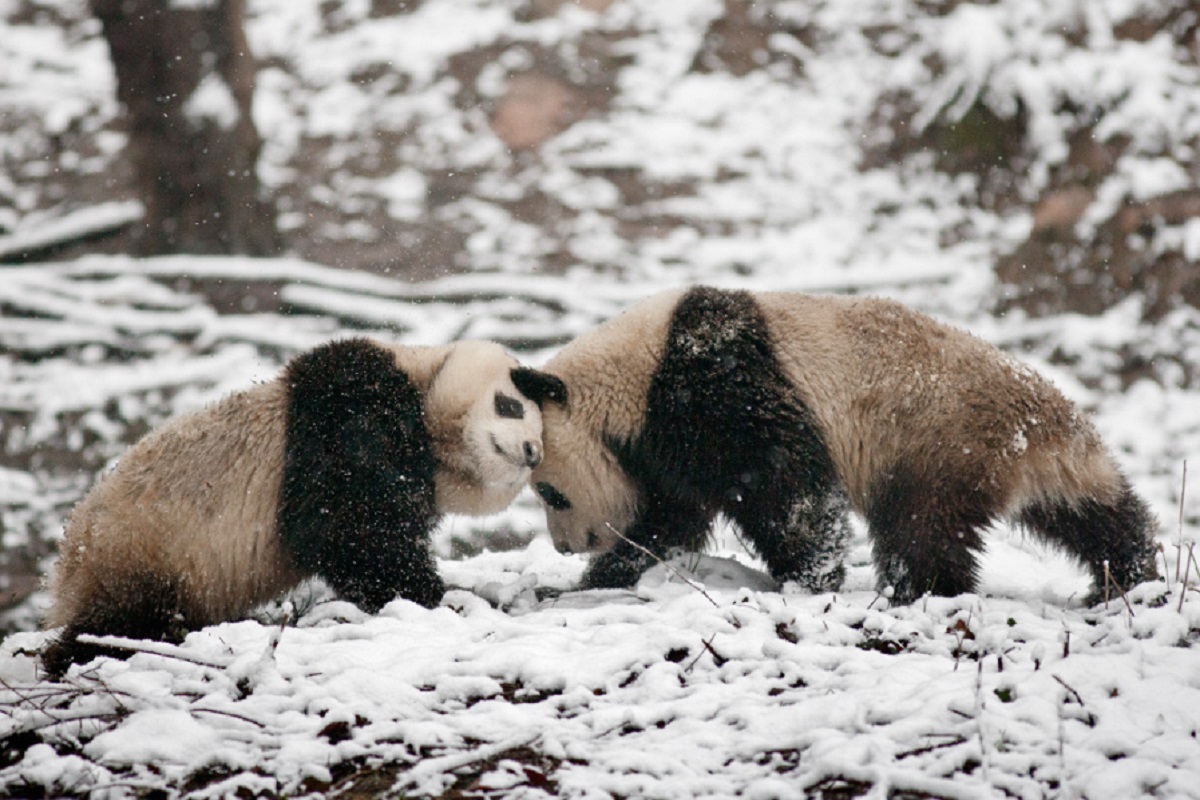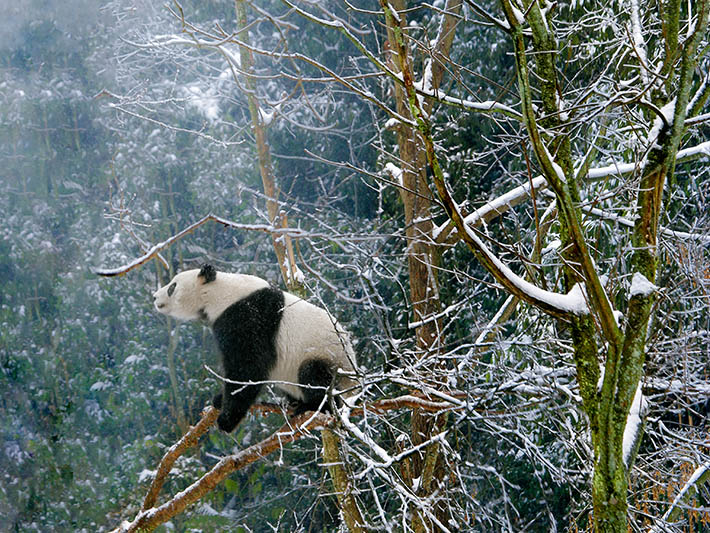Getting to the Bottom of Global Panda Fever

Lonely Panda
Unlike cute and cuddly giant pandas in zoos, those living in the wild are more accustomed to solitude. For most of their lives, wild giant pandas live alone in boundless forests, except for when males and females come together in breeding season.
Compared to those in captivity, wild giant pandas seem like a different species and possess the ferocious and opportunistic nature and great strength of animals in the Ursidae family.
Adult pandas in the wild gather once a year in March and April during which time males fight for mating rights. A female climbs a tall fir to send mating signals, which can attract male pandas from several kilometers away.
As they gather beneath the tree, males yowl at each other like barking dogs, then chase and fight each other until all of them are bleeding. At that moment, pandas seem as ferocious as any bears on the planet, and their roars resound through the valley. Even with scientific researchers watching aside, the fights remain spirited as if no humans were around.
Except for mating periods, wild pandas usually live alone in their respective domains. Mother pandas are the exception, who take care of their cubs until adulthood. For this reason, wild female pandas are known as the “greatest mothers” in the world.
Jiaojiao, a wild mother panda, is a good example: In the first several days after the birth of her baby, she continuously hugged it in her den, warming and breastfeeding it and combing its fur. She didn’t eat or drink anything for some time. Five days later, Jiaojiao left the den for a short while to defecate. She didn’t go out to look for bamboo branches as food until her cub was 14 to 15 days old. Until then, she totally subsisted on stored fat while breastfeeding her baby. For the subsequent year and a half, Jiaojiao helped her cub get acquainted with every nearby mountain and river and taught it skills for surviving in the wilderness until it could live on its own.
Panda cubs are altricial and barely developed when born, but they grow exponentially under the meticulous care of their mothers. Two or three months after birth, a cub can walk by itself and leave the den, at a weight equal to newborns of other mammal species. However, it will continue to live with its mother for another year or more until it learns all skills it needs to survive alone.

Umbrella Species
The whole world is crazy about the giant panda.
To welcome a panda from China, Britain introduced a specially decorated plane with a panda theme and even an honor guard to escort it from the airport to its new home. Belgium and Malaysia provided gardenlike “residences” for pandas. Before sending panda cub Bao Bao back to China, Americans spent several months organizing various kinds of activities to say goodbye. On the day it departed, hundreds gathered at the airport to see it off in tears.
The giant panda isn’t that unique among the eight species of bears in the world. In terms of size, it is neither the biggest nor the smallest. In terms of fur color, it isn’t the only species in black and white; its cousins—the sun bear, the Asian black bear, the American black bear and the sloth bear—all have black and white fur to some extent. In terms of diet, the giant panda isn’t the only vegetarian bear. Except for the polar bear, all other species of bears are omnivores. Even the polar bear sometimes feeds on plant roots, leaves and fruits in summer when sea ice is scarce.
Still, the giant panda is considered the most adorable bear in the world in part due to its strict bamboo diet. In the wild, bamboo grows all over mountains, and the giant panda doesn’t need a highly developed olfactory organ to look for food. Gradually, its snout has become considerably shorter. Bamboo is hard to chew, so it developed a large, round face with more masticatory muscles, which makes it so cute.
The giant panda is an important icon for China’s effort to protect nature. For this reason, it is dubbed an “umbrella species.” Giant panda habitats are also home to 70 percent of bird species and mammals and 31 percent of amphibians unique to China. Almost all panda habitats (as much as 96 percent of the total) are also habitats for some of the most important native Chinese species. Consequently, any effort to conserve the giant panda will also benefit many other unique species in China.
As we restore forests and build ecological corridors to help pandas evade disturbances and highways, we are also helping thousands of other species and even the forests, water sources and mountains in southwestern China. Through protecting giant pandas, we are protecting the local ecosystem and all living beings there.



Worrisome Future
So far, China has established 65 giant panda conservation bases covering 56 percent of their habitats. Still, it’s hard to consider the future of the species bright.
In the Qinling Mountains, emerging tourist zones and newly built towns are adjacent to giant panda habitats, causing unpredictable risk to the animal. Human activity has not only resulted in direct disturbances, but has also severely fragmented habitats of giant pandas.
At present, more than 300 wild pandas living in the Qinling Mountains are completely cut off from those in Sichuan and Gansu provinces. Minshan Mountain in Sichuan is the largest single habitat for the giant panda. However, the formerly unified habitat has been cut into a dozen pieces.
Panda communities in Daxiangling, Xiaoxiangling and Liangshan are only dozens of kilometers from each other. However, rapid economic and population expansion and construction of railways, highways, power plants and mines have made migration of pandas from one mountain to another virtually impossible. The fragmentation of their habitats increases the likelihood of inbreeding, resulting in a drop in survivability and genetic diversity of pandas in some regions.
The author is a research fellow at the School of Life Sciences at Fudan University focusing on the research of population dynamics and conservation solutions for large and medium-sized mammals.